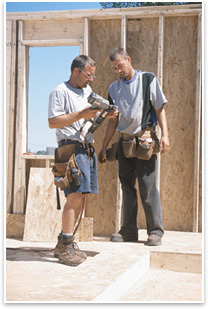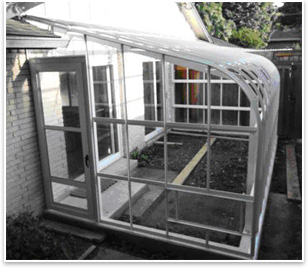
Best Practices by Jim Atkins, FAIA, and Grant A. Simpson, FAIA
Summary: Work conformance is an important measure of a successful project because it fulfills contracted obligations. Yet when buildings are constructed, there is always some amount of nonconforming work; always. The variances may be minor. Hopefully, they are. But they are always there. Architects may not be aware of all of the discrepancies, and that is why we certify “substantial” completion rather than “final” completion, and why certifications for payment are limited to our knowledge, information, and belief. We do not and cannot know precisely how all of the work has been put together because we do not manage construction, and we do not observe each and every act by every worker every day.
These activities carry with them some amount of risk, on which we have made many observations. We addressed general construction contract administration responsibilities last year in the June article, “Visible Means: Site Visits and Construction Observation.”
Thou shalt Importantly, the implementation of compliance is entirely the contractor’s responsibility, in accordance with Section 3.3.1: “The Contractor shall be solely responsible for and have control over construction means, methods, techniques, sequences and procedures and for coordinating all portions of the Work under the Contract…” To further confirm that the contractor has met their obligation to provide work that conforms to the contract, the contractor may be obligated to certify before a notary—for instance in AIA Document G702, Application and Certificate for Payment: “… the Work covered by this Application for Payment has been completed in accordance with the Contract Documents.” Further, in A201, Section 12.2.1.1: “The Contractor shall promptly correct Work rejected by the Architect or failing to conform to the requirements of the Contract Documents … Costs of correcting such rejected Work … shall be at the Contractor’s expense.” Also, in Section 12.2.3: “The Contractor shall remove from the site portions of the Work which are not in conformance with the requirements of the Contract Documents and are neither corrected by the Contractor nor accepted by the Owner.” Under the AIA Contract Document framework, the architect has no explicit obligation to make the work conform to the contract documents. Instead, the architect is required to have general knowledge of work conformance and report the status to the owner. In A201, Section 4.2.2: “The Architect … will visit the site … to determine in general if the Work is being performed in a manner indicating that the Work, when fully completed, will be in accordance with the Contract Documents.” Further, in Section 4.2.3: “The Architect will not be responsible for the Contractor’s failure to perform the Work in accordance with the requirements of the Contract Documents.” Based on this provision, the architect has no responsibility whatsoever to make the work conform or for work that does not conform.
The owner also has the option to accept work that does not conform to the contract documents. In A201, Section 12.3.1: “If the Owner prefers to accept Work which is not in accordance with the requirements of the Contract Documents, the Owner may do so instead of requiring its removal or correction, in which case the Contract sum will be reduced as appropriate and equitable. Such adjustment shall be effected whether or not final payment has been made.” This clause recognizes that the owner loses value when the work does not conform, and it requires the contractor to give money to the owner to compensate, even if the project has been completed and final payment has been made. Finally, lest there be any remaining confusion about the responsibility to provide Work that conforms to the contract documents, A201 Section 3.1.3 settles the issue: “The Contractor shall not be relieved of obligations to perform the Work in accordance with the Contract Documents either by activities or duties of the Architect in the Architect's administration of the Contract, or by tests, inspections or approvals required or performed by persons other than the Contractor.” Cause and conditions
Since, under the AIA Contract Documents framework, only the contractor is solely responsible for the work and its conformance, only the contractor can cause nonconforming work. Although the contract requires conformance and the contractor typically wants the work to conform, there is always some amount of work on a project that does not conform. Ideally, the errant conditions are minor and are caused by the inexact nature of the construction process. Such conditions need not be cited by the architect unless they are both detrimental and obvious or have a material adverse impact on the project. For example, if a room is a smidgeon smaller than designed, and its use is not adversely affected, it need not be documented. However, if the contents of the room will not fit or its use is otherwise adversely affected, it should be cited as nonconforming, and the owner should choose whether or not to accept it.
Hopefully, mistakes in building layout are inconsequential and do not require documentation. However, significant differences may require a variance from the local governing authority. Manufacturer variances can cause a revision in building layout. MASTERSPEC, Section 017000, EXECUTION REQUIREMENTS, Article3.2, PREPARATION, requires the contractor to take field measurements and verify space requirements and dimensions of items shown diagrammatically on the drawings to determine if a change in the documents is required to make things fit appropriately. Both contractor substitutions and nonconforming work can only be accepted by the owner. In A201, Section 3.4.2, “The Contractor may make substitutions only with the consent of the Owner, after evaluation by the Architect and in accordance with a Change Order.” Unauthorized substitutions can be, and by definition are, viewed as nonconforming work. Substitutions can be as challenging as nonconforming work, and they are worthy of a separate article. There are typically instances of installation errors that do not materially affect the use of the project. While these conditions may be significant enough to be documented, if the building use and appearance are not adversely affected, they are usually accepted. Many installation errors and other forms of nonconforming work that are not obvious go without notice or documentation. There may be conditions where the contractor inadvertently constructs or prefers to construct the project in a way that is different from the contract documents. In such cases, if the contractor is aware of the deviation, he or she is obligated to ask the architect if the variation is acceptable. Since the architect is only on site occasionally, there may be conditions that are constructed in variance to the documents that are known only by the contractor and never known by the architect. This may be acceptable as long as such conditions do not adversely affect the completed project. Options for nonconforming work
When nonconforming work is discovered, the architect must first determine if it adversely affects the building use or appearance. If it is found to be unacceptable to the architect, unless the owner wishes to accept it, it must be removed and replaced with work that conforms. Should such removal and replacement affect the completion schedule, or perhaps the cost of the work, the work is often accepted by the owner under pressure so as to preserve the completion date or protect the budget.
If the architect finds the nonconforming condition to be acceptable, a recommendation for acceptance is made to the owner. If the owner accepts the variance, the architect may or may not choose to change the documents to reflect the varying condition. The architect may instead wish to recommend that the contractor document the change in the contractor’s as-built records. Owner-accepted nonconforming work
Only the owner has the authority under the construction contract to accept nonconforming work. In A201, Section 12.3.1: “If the Owner prefers to accept Work which is not in accordance with the requirements of the Contract Documents, the Owner may do so instead of requiring its removal and correction …” When this occurs, the contract documents are often changed to reflect the varying condition. When the documents are changed to conform to the nonconforming condition, the design becomes that of the architect as if it had been included in the original documents. This arises from state licensing statutes that require supervisory control over document content along with the professional obligations associated with signing and sealing contract documents. However, because of the reasons stated above, the architect has no obligation to change the documents to match the nonconforming work. The architect’s obligation to meet the professional standard of care overrides the contractor’s mistakes and the owner’s preferences. The architect’s ability to practice may be on the line for the errant condition, and only the architect can make the judgment call on changing the contract documents.
Side effects
Some architects propound that there is no danger in the architect’s acceptance of nonconforming work when it does not meet the architect’s professional standards. They posit that a “qualification” in the change order declaring innocence and absolution is sufficient to protect the architect’s practice. These actions may suffice if you know of the variation, it complies with codes and standards, it complies with the standard of care, and the owner is unlikely to reject its acceptance at some point in the future.
These acts went unpunished until the real estate market collapsed, and all those inadequately collateralized projects experienced foreclosure. The assuming lenders immediately hired consultants to do “due diligence” reviews of the completed work. The errant conditions were noted, and lawsuits were filed for the discovered “nonconforming” work that was not documented by the architect. As the lawsuits played out, architects were asked in deposition why they certified substantial completion with no qualifications when there were so many nonconforming conditions present. Many architects were then asked to make the owners whole for the cost of restoring the project to design conformance. We aren’t proposing that owners are justified in making such claims, especially given our record of examining the limited nature of the architect’s presence on the typical construction site. We only wish to point out that the risks associated with these owner-made claims remain a threat. Contractor claims
While most contractors uphold and make good their responsibility for nonconforming work, there are some who join in the claim game when nonconforming work is discovered. The first position often taken by the offending contractor is that they built the project per “plans and specs,” and that any nonconforming work is therefore the architect’s fault. The second argument they use for their defense is likely to be something along the lines of: “The architect was on the site regularly, and he did not tell me I was building it wrong.”
These positions seek to avoid the direct responsibility for defective and nonconforming work, and fly in the face of the AIA Contract Documents and the traditional relationship between architects and contractors. It should be the goal of all parties to build a well-crafted project and bear appropriate responsibilities. It is unfortunate that some contractors and their legal experts take this approach because it reflects an emerging belief that contractors are not responsible for their own contracted actions. Trail’s end
I The options reaching a conclusion are to have the contractor tear out the nonconforming work and replace it with work that conforms, or accept the deviation and move on. The architect can attempt to be helpful by offering opinions, but only the owner can make the final choice. Conclusion
The full scope of the defective and nonconforming work discussion is far too great to cover in this short article. Other in-depth discussions on the subject could delve into nonconforming work caused by supervision, inspection oversights, or submittals and shop drawings. The topics of contractors’ selection of unqualified subcontractors or lesser quality materials are also worthwhile examples. Although the AIA Contract Documents endeavor to establish specific responsibility for nonconforming work, and they clearly draw the conclusion that only the contractor can cause it, the fact remains that the architect will always be dragged into the fray if a project is beleaguered by extensive nonconforming work. The most effective risk management approach for an architect is to try reasonably to find nonconforming work. The next best risk management approach, when nonconforming work is discovered, is to discuss it at regular meetings and keep the subject open until the issue is resolved. When you do encounter nonconforming work, you should expect that you may be blamed for causing it. That seems to be the game these days. You should face the heat, and bring along your dog-eared and faded Owner-Architect Agreement and A201 in your briefcase so you can cite terms and conditions. It is unfortunate that so many risk |
||
Copyright 2007 The American Institute of Architects. All rights reserved. Home Page |
||
home
news headlines
practice
business
design
recent related
› Double-Edged Sword: The Owner’s Separate Consultants
› The Power of One: The Effective Owner-Architect-Contractor Team
A printer-friendly version of this article is available.
Download the PDF file.
This series will continue next month in AIArchitect when Grant and Jim will continue to explore the stimulating aspects of our practice. If you would like to ask Jim and Grant a risk- or project-management question or request them to address a particular topic, contact them through AIArchitect.
James B. Atkins, FAIA, is a principal and director of risk management with HKS Architects. He serves on the AIA Risk Management Committee and is chairman of The Architect’s Handbook of Professional Practice, 14th edition Revision Task Group.
Grant A. Simpson, FAIA, has served as a project delivery leader for several international firms where his responsibilities included construction documentation, project management, and loss prevention activities. He serves on the AIA Practice Management Advisory Group.
The statements expressed in the article reflect the author’s own views and do not necessarily reflect the views or positions of the American Institute of Architects. Publication of this article should not be deemed or construed to constitute AIA approval, sponsorship, or endorsement of any method, product, service, enterprise, or organization.
This article is intended for general information purposes only and does not constitute legal advice. The reader should consult with legal counsel to determine how laws, suggestions, and illustrations apply to specific situations.










